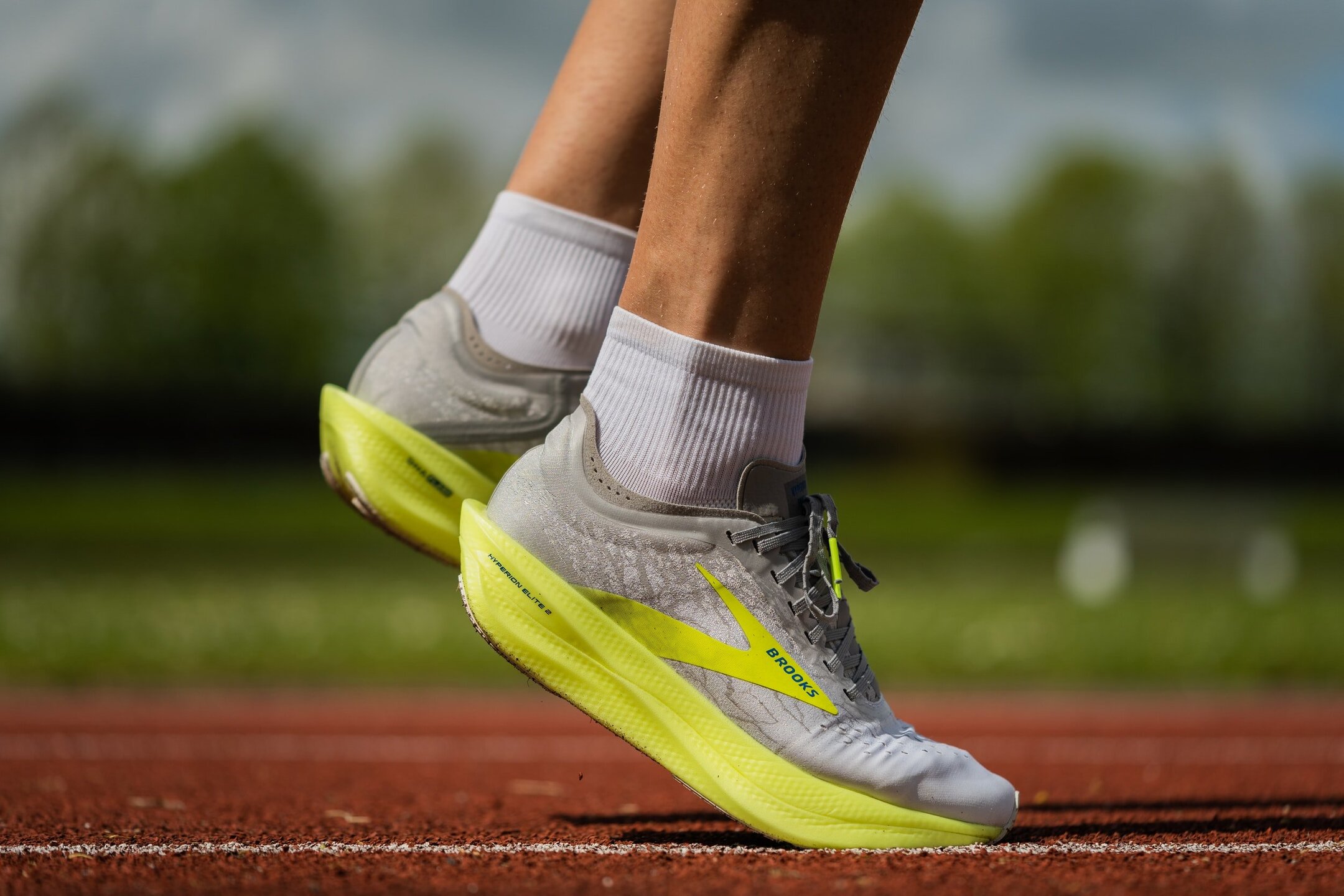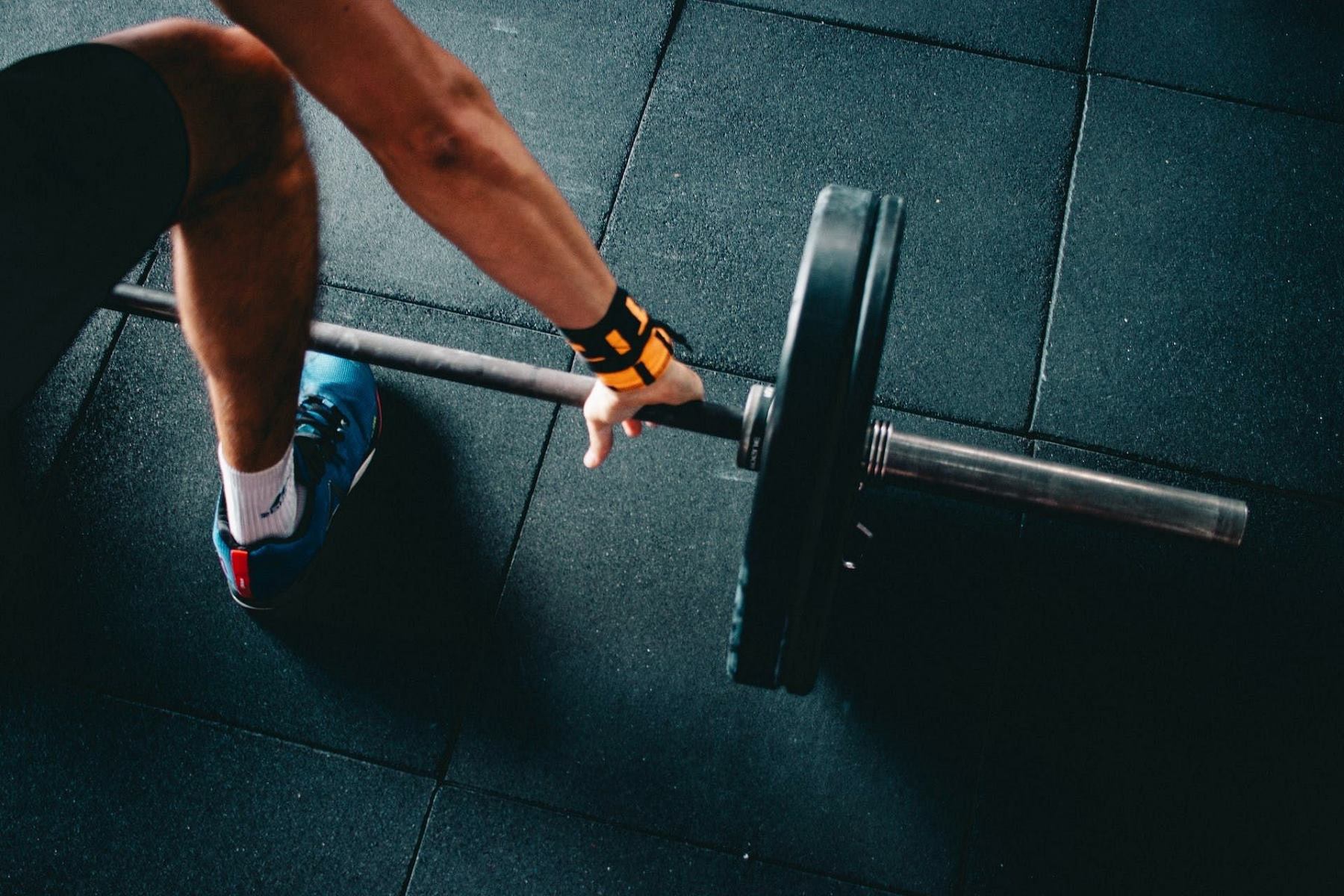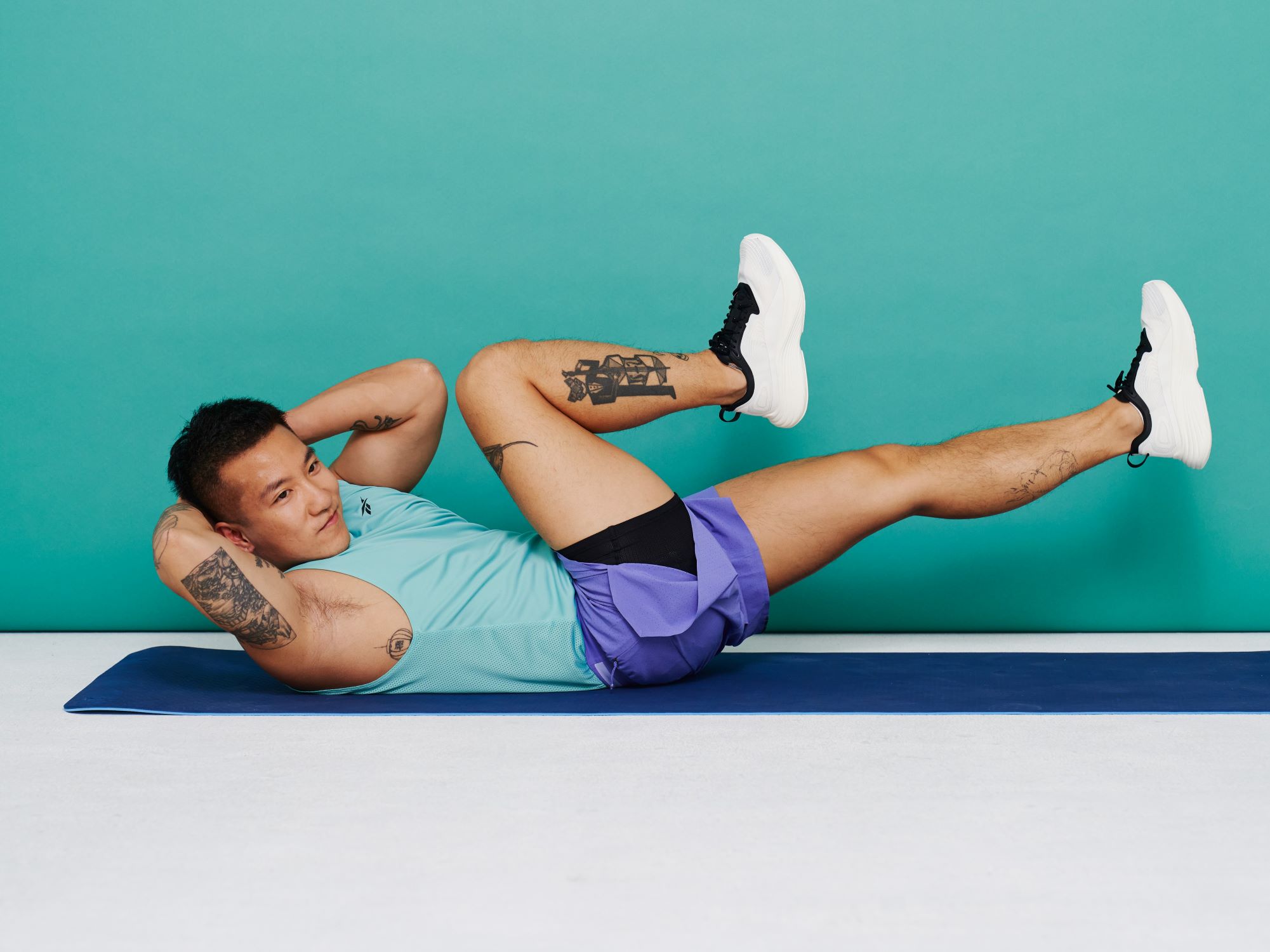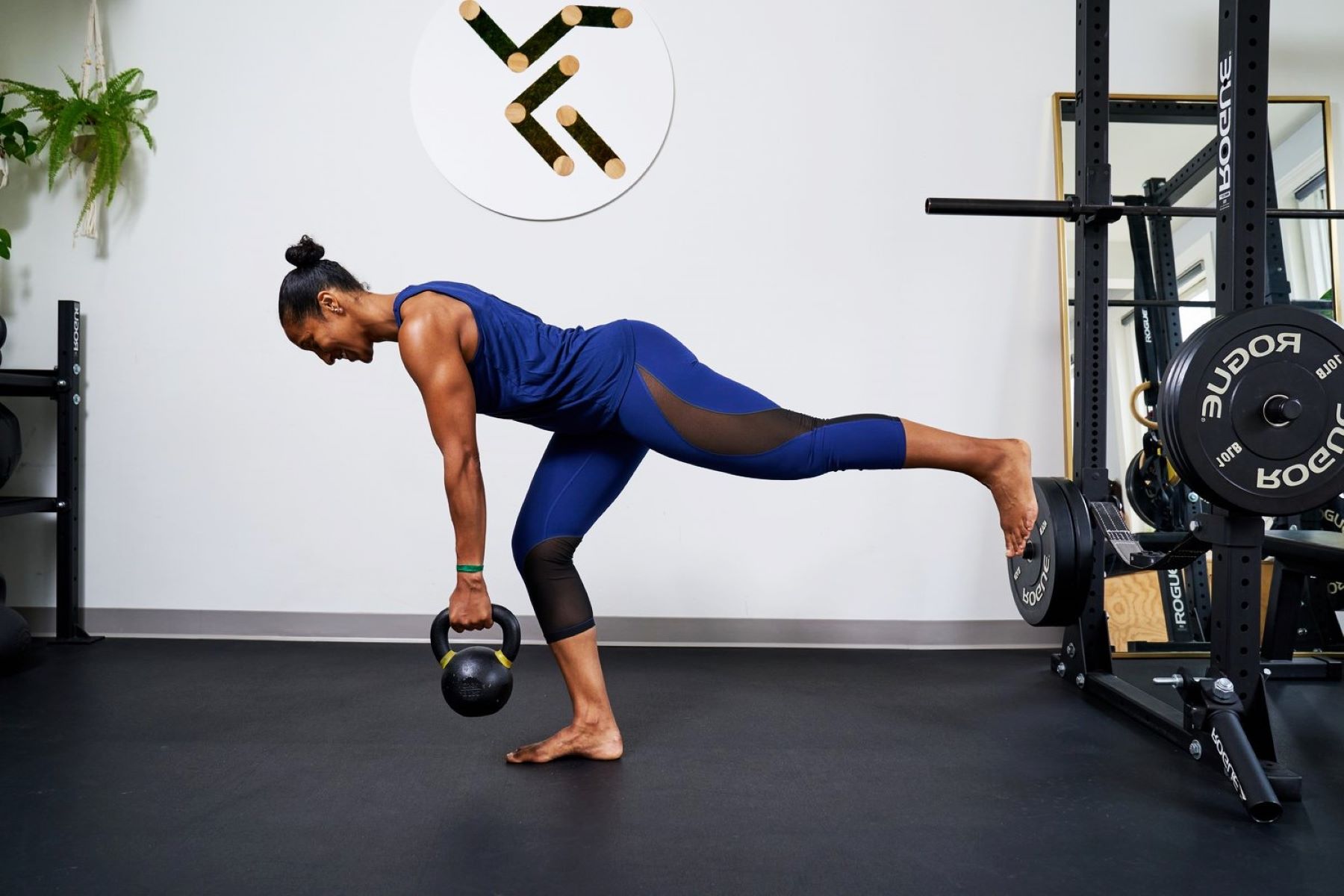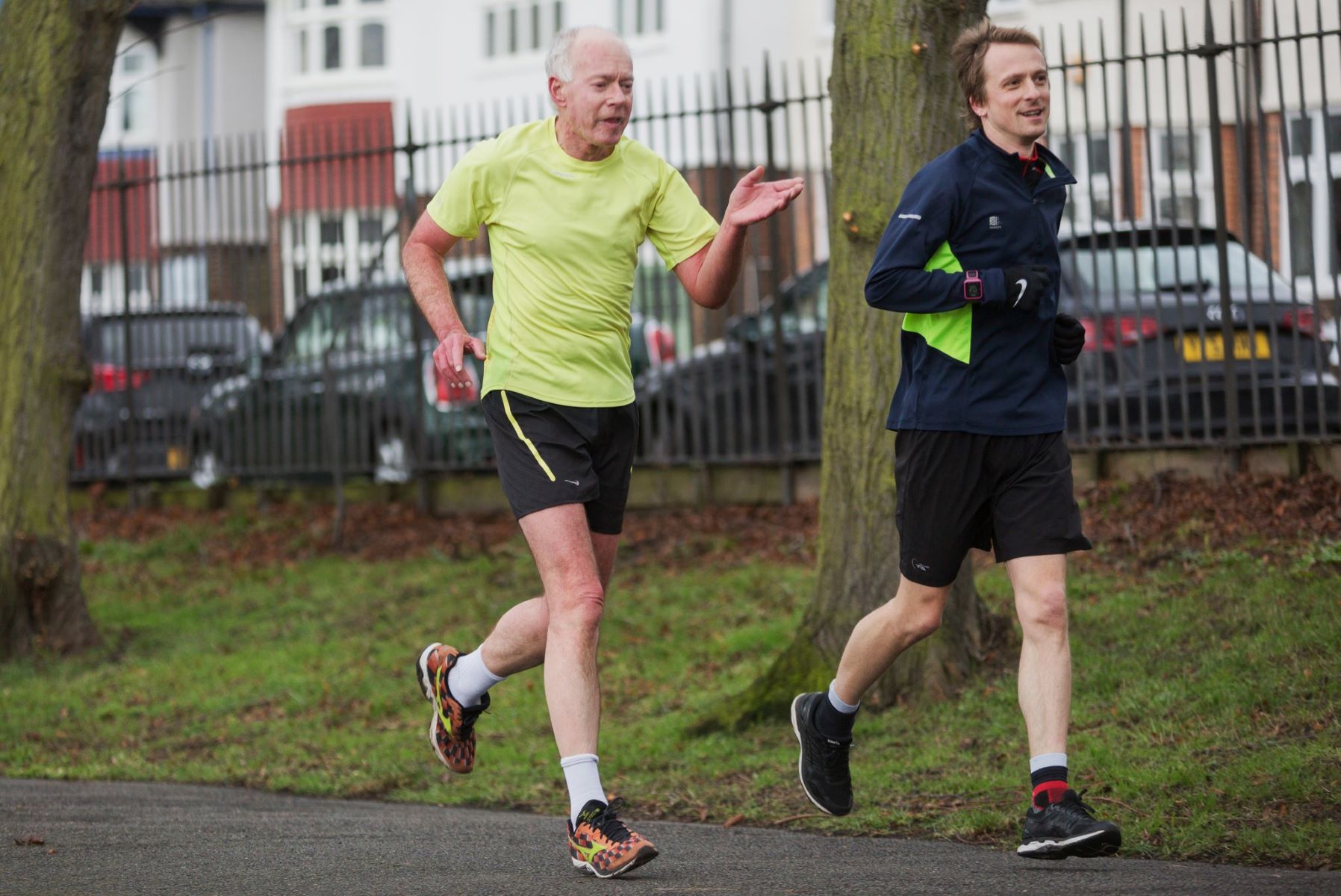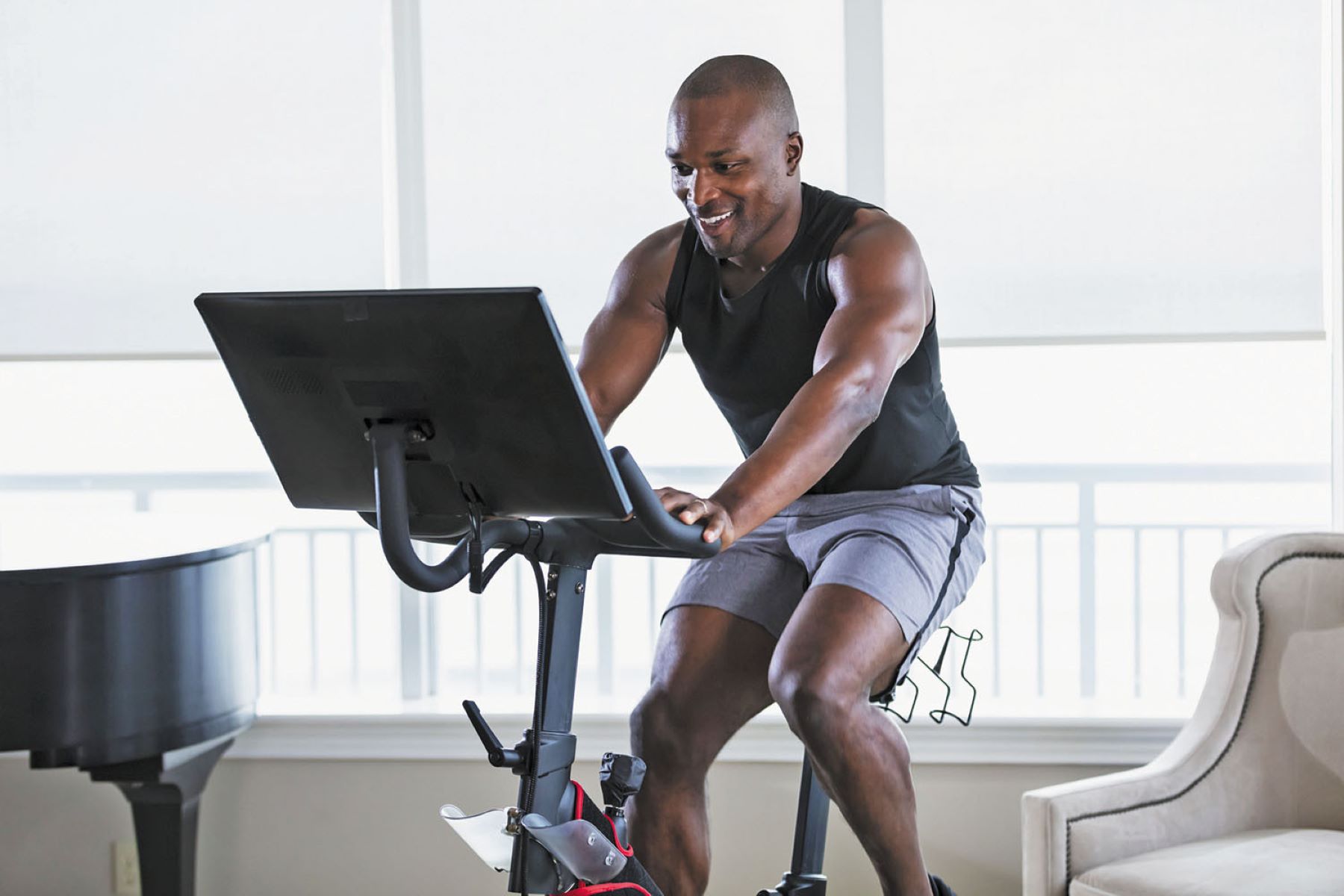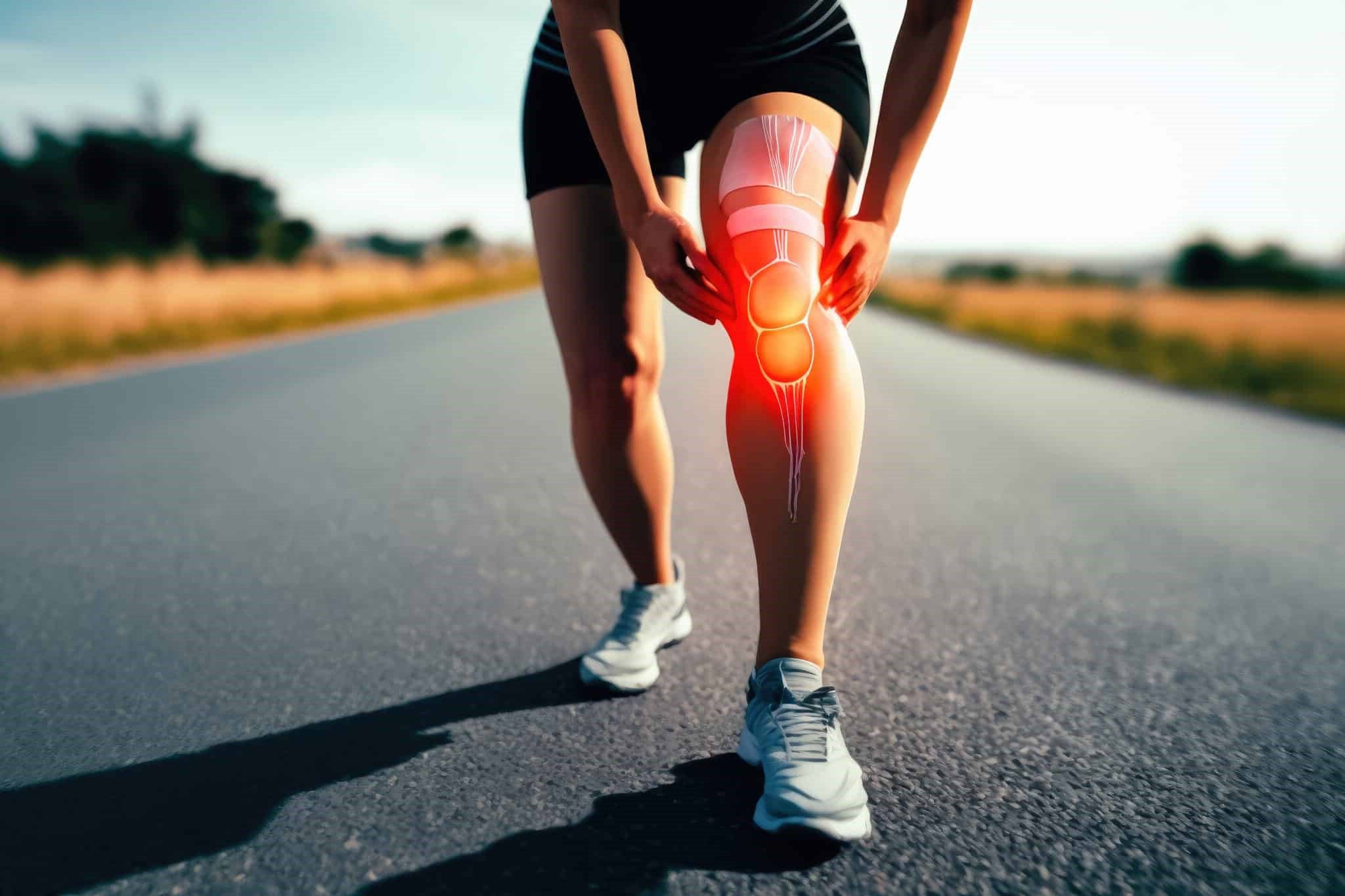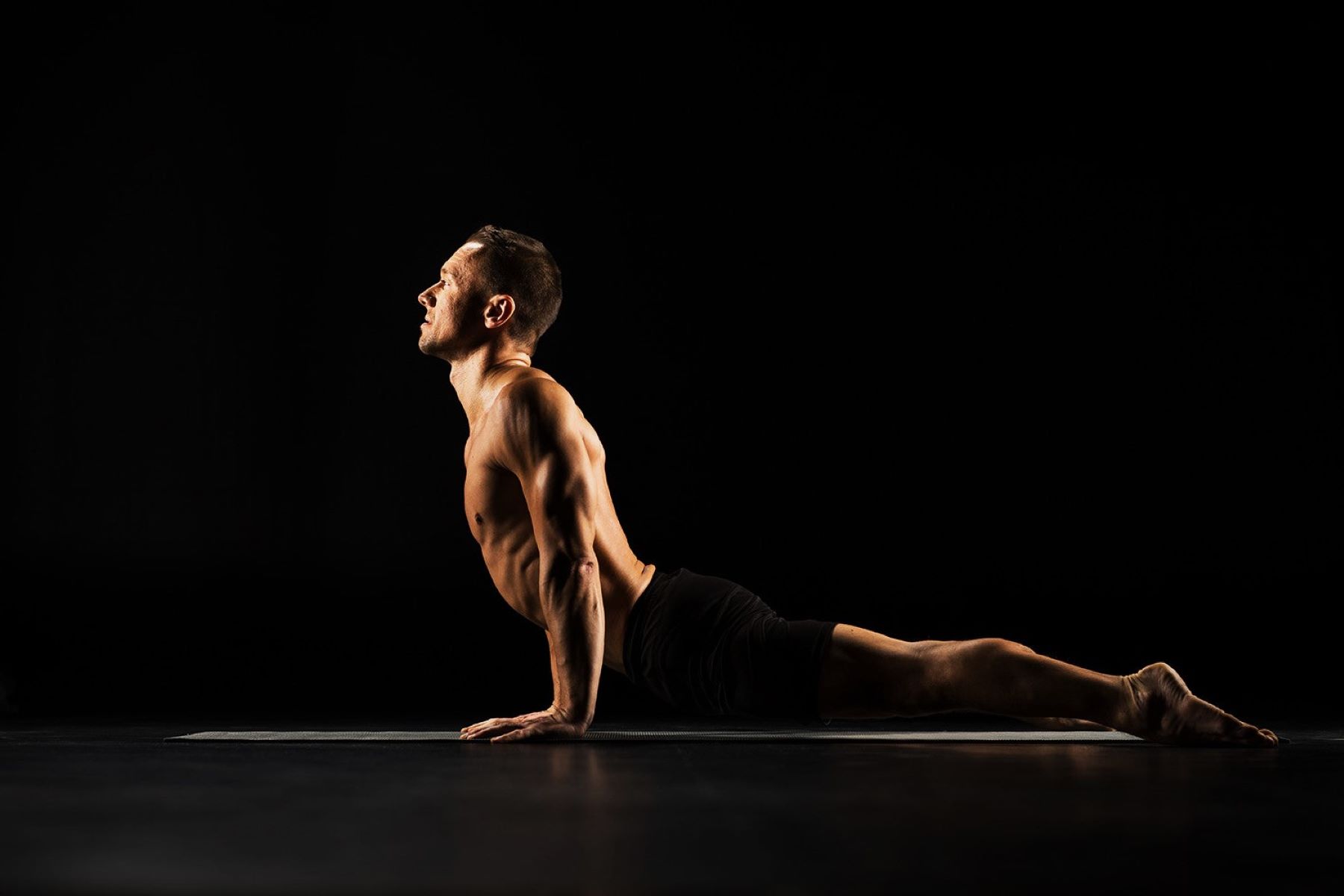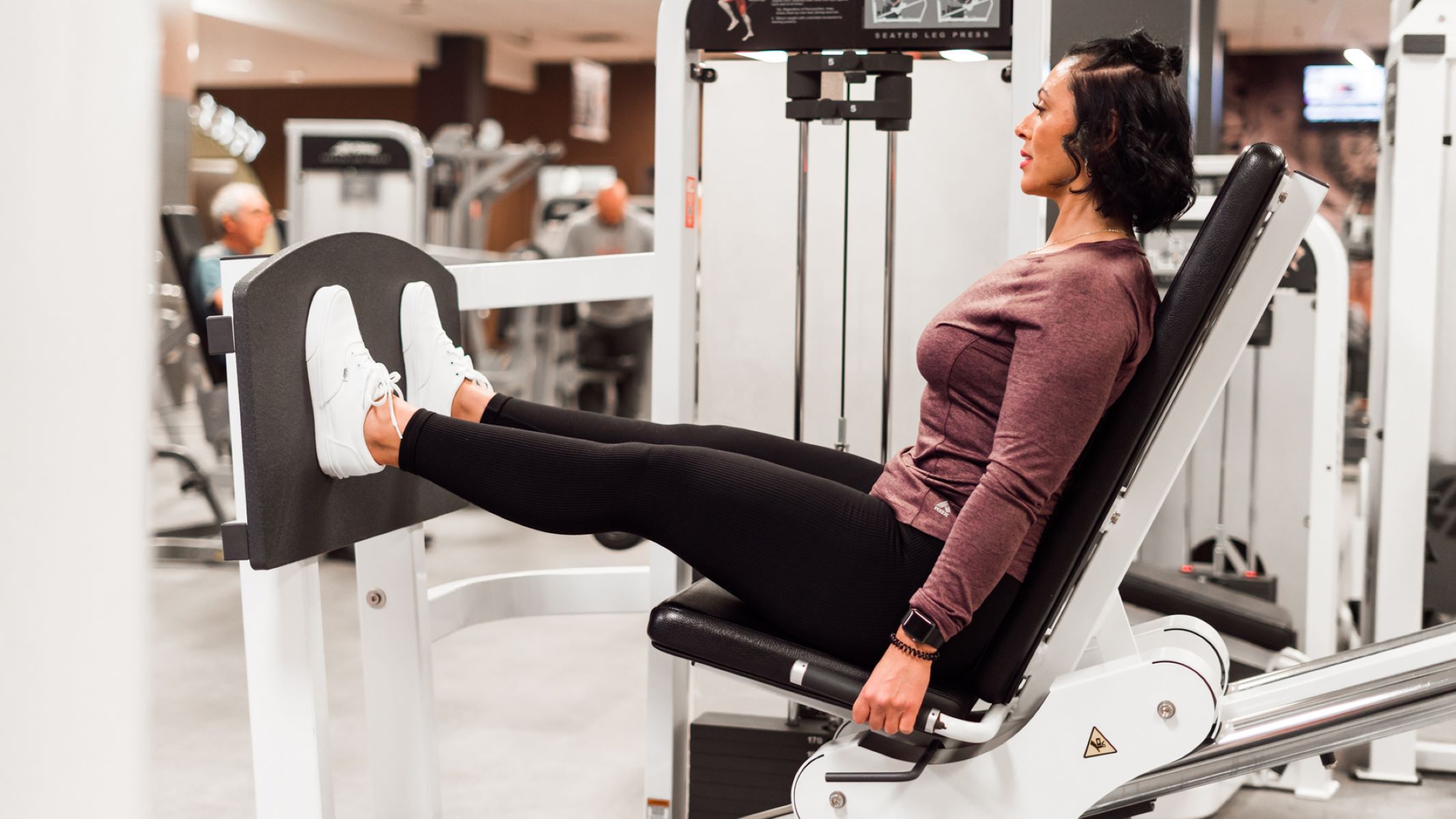Home>Training & Techniques>The Essential 7 Strength Moves For Runners
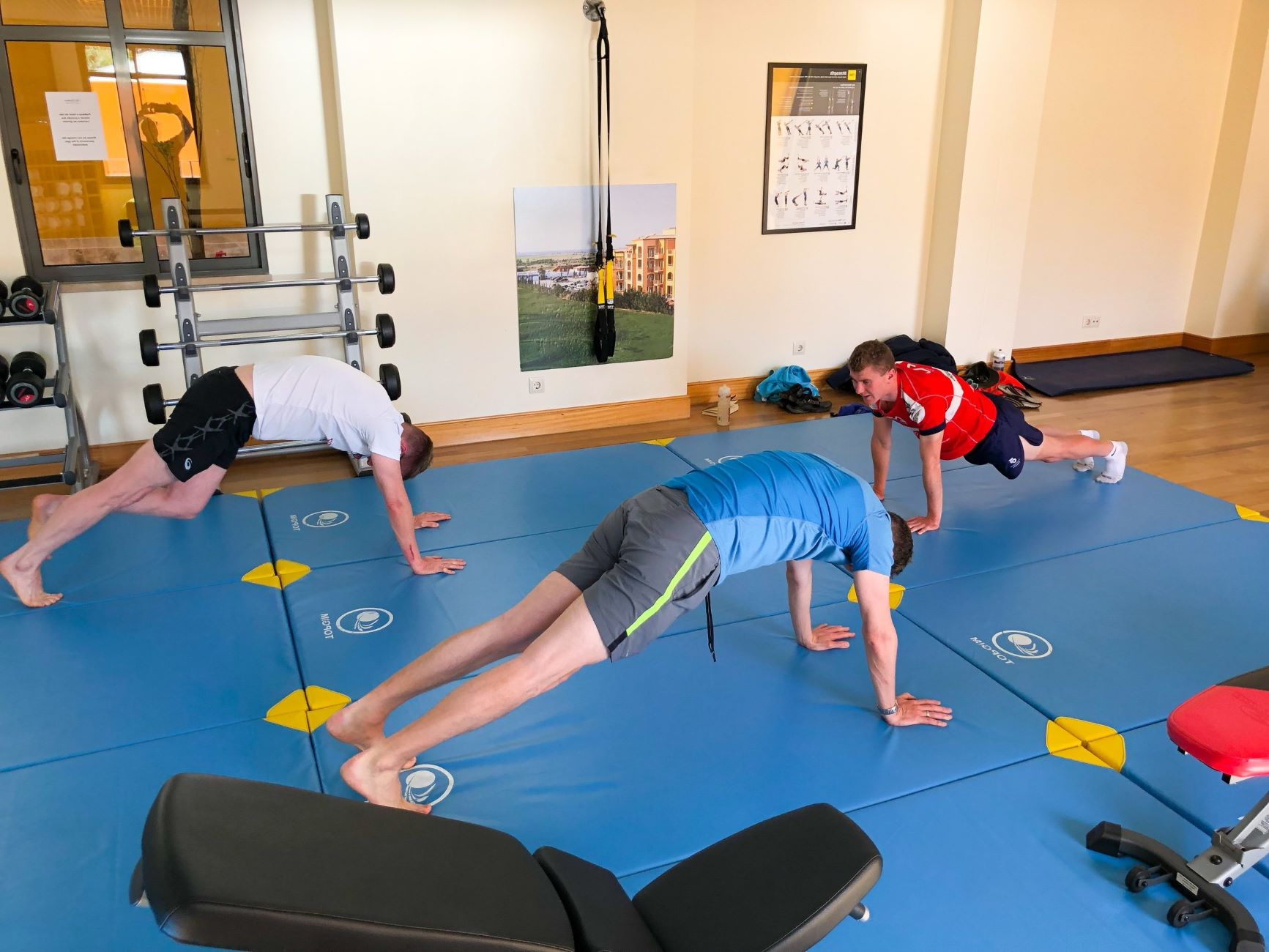

Training & Techniques
The Essential 7 Strength Moves For Runners
Published: March 4, 2024
Discover the essential 7 strength moves for runners to improve performance and prevent injuries. Learn effective training & techniques for optimal results.
(Many of the links in this article redirect to a specific reviewed product. Your purchase of these products through affiliate links helps to generate commission for Therunningadvisor.com, at no extra cost. Learn more)
Table of Contents
Introduction
As a runner, you understand the exhilaration of pounding the pavement, the rhythm of your breath, and the feeling of freedom that comes with each stride. Running is not just a physical activity; it's a way of life. However, to truly excel in this sport, it's essential to recognize the significance of strength training. While logging miles is crucial for building endurance and cardiovascular health, incorporating strength moves into your routine can take your running performance to the next level.
In this comprehensive guide, we will delve into the seven essential strength moves that every runner should incorporate into their training regimen. These exercises are specifically tailored to target the muscle groups that are vital for running, helping to enhance your speed, endurance, and overall performance. Whether you're a seasoned marathoner or a novice runner, integrating these strength moves into your workout routine can make a remarkable difference in your running journey.
By focusing on these key exercises, you'll not only fortify your muscles but also improve your running form, reduce the risk of injury, and boost your overall athleticism. So, lace up your shoes, get ready to sweat, and let's explore the transformative power of strength training for runners.
The Importance of Strength Training for Runners
Strength training is a game-changer for runners, offering a myriad of benefits that extend far beyond the weight room. While the primary focus of a runner may be logging miles and improving endurance, neglecting strength training can lead to missed opportunities for enhanced performance and increased resilience.
Injury Prevention
One of the most compelling reasons for runners to embrace strength training is its role in injury prevention. Running exerts significant stress on the body, particularly the lower limbs and core muscles. By incorporating strength moves into your routine, you can fortify these muscle groups, thereby reducing the risk of common running-related injuries such as shin splints, IT band syndrome, and knee pain. Building strength in the muscles that support and stabilize your joints can help you maintain proper form and alignment, mitigating the impact of repetitive stress on your body.
Enhanced Performance
Strength training contributes to improved running performance by enhancing muscular strength, power, and endurance. Stronger leg muscles, developed through exercises like squats, lunges, and deadlifts, can generate more force with each stride, propelling you forward more efficiently. Additionally, a strong core, cultivated through planks and Russian twists, plays a pivotal role in maintaining stability and transferring power from the lower body to the upper body, essential for maintaining form and speed during long runs.
Correcting Muscle Imbalances
Many runners unknowingly develop muscle imbalances due to the repetitive nature of their sport. These imbalances can lead to inefficient movement patterns and increased injury risk. By engaging in targeted strength training, runners can address these imbalances, ensuring that all muscle groups are equally strong and functional. This holistic approach to fitness not only supports running performance but also contributes to overall physical well-being.
Improved Running Economy
Running economy, which refers to the energy cost of running at a given pace, is a critical factor in determining a runner's performance. Research has shown that strength training can positively impact running economy by improving neuromuscular coordination and efficiency. By integrating strength moves into your training, you can enhance your body's ability to produce force and maintain optimal running mechanics, ultimately leading to improved endurance and speed.
In essence, strength training is not merely a complementary aspect of a runner's regimen; it is a foundational pillar that can elevate your running experience to new heights. By recognizing the importance of strength training and embracing it as an integral part of your routine, you can unlock your full potential as a runner and embark on a journey of enhanced performance, resilience, and overall well-being.
Move 1: Squats
Squats are a fundamental strength move that holds immense value for runners. This compound exercise targets the quadriceps, hamstrings, glutes, and lower back, making it a powerhouse for building lower body strength and stability. As a runner, the benefits of incorporating squats into your training regimen extend far beyond the weight room.
Executing a proper squat involves standing with feet shoulder-width apart, engaging the core, and lowering the body by bending the knees and hips, as if sitting back into an imaginary chair. The movement is then reversed to return to the starting position. When performed with correct form, squats engage multiple muscle groups simultaneously, mimicking the biomechanical demands of running and promoting functional strength that directly translates to improved performance on the road.
The impact of squats on a runner's strength and performance is multifaceted. Firstly, this exercise strengthens the quadriceps, the primary muscles responsible for extending the knee during the push-off phase of running. By enhancing quadriceps strength, squats enable runners to generate more power with each stride, leading to improved speed and efficiency. Additionally, strong quadriceps contribute to better knee stability, reducing the risk of common running injuries associated with knee misalignment and instability.
Furthermore, squats target the glutes, which play a pivotal role in driving forward propulsion during running. Strong gluteal muscles not only enhance acceleration and speed but also contribute to overall running economy by optimizing the transfer of force from the lower body to the ground. This is particularly beneficial for long-distance runners seeking to maintain form and efficiency over extended periods.
Incorporating squats into your training routine also fosters improved hip and core stability, essential for maintaining proper running mechanics and reducing the risk of hip-related injuries. The engagement of the core muscles during squats promotes a strong and stable torso, which is integral for transferring force between the upper and lower body during running, ultimately enhancing overall running performance and endurance.
In essence, squats are a cornerstone of strength training for runners, offering a holistic approach to building lower body strength, power, and stability. By integrating squats into your workout regimen, you can fortify the muscle groups essential for running, improve your running form, and elevate your performance on the track or trail. Whether you're aiming to sprint faster, conquer challenging terrains, or simply enhance your overall running experience, squats are a valuable ally in your journey as a runner.
Move 2: Lunges
Lunges are a quintessential strength move that holds immense value for runners, offering a myriad of benefits that directly translate to improved performance on the track or trail. This dynamic exercise targets the quadriceps, hamstrings, glutes, and calves, making it a versatile and effective tool for building lower body strength, stability, and balance.
To perform a standard lunge, begin by standing tall with your feet hip-width apart. Take a controlled step forward with one leg, ensuring that your knee is positioned directly above your ankle. Lower your body until both knees are bent at a 90-degree angle, with your back knee hovering just above the ground. Push back up to the starting position, engaging the muscles of the front leg to drive the movement. Repeat the lunge on the opposite leg to complete one full repetition.
The impact of lunges on a runner's strength and performance is multifaceted. Firstly, this exercise strengthens the quadriceps and hamstrings, which are crucial for generating power and propulsion during running. By enhancing the strength of these muscle groups, lunges contribute to improved speed, agility, and overall running efficiency. Additionally, strong quadriceps and hamstrings play a pivotal role in stabilizing the knee joint, reducing the risk of common running-related injuries such as patellofemoral pain and IT band syndrome.
Furthermore, lunges target the glutes, which are essential for driving forward propulsion and maintaining stability during running. Strong gluteal muscles not only enhance acceleration and speed but also contribute to overall running economy by optimizing the transfer of force from the lower body to the ground. This is particularly beneficial for long-distance runners seeking to maintain form and efficiency over extended periods.
Incorporating lunges into your training routine also fosters improved hip and core stability, essential for maintaining proper running mechanics and reducing the risk of hip-related injuries. The engagement of the core muscles during lunges promotes a strong and stable torso, which is integral for transferring force between the upper and lower body during running, ultimately enhancing overall running performance and endurance.
In essence, lunges are a valuable addition to a runner's strength training arsenal, offering a comprehensive approach to building lower body strength, power, and stability. By integrating lunges into your workout regimen, you can fortify the muscle groups essential for running, improve your running form, and elevate your performance on the track or trail. Whether you're aiming to sprint faster, conquer challenging terrains, or simply enhance your overall running experience, lunges are a valuable ally in your journey as a runner.
Move 3: Deadlifts
Deadlifts stand as a foundational strength move that holds immense value for runners, offering a myriad of benefits that directly translate to improved performance on the track or trail. This compound exercise targets the posterior chain, including the hamstrings, glutes, lower back, and core, making it a powerhouse for building lower body strength, stability, and resilience.
To execute a standard deadlift, begin by standing with your feet hip-width apart and the barbell positioned in front of you. Hinge at the hips and bend your knees to lower your torso and grip the bar with an overhand grip, hands shoulder-width apart. Engage your core and drive through your heels as you lift the bar, keeping it close to your body and maintaining a straight back. Stand tall and then reverse the movement to lower the bar back to the ground, ensuring controlled and deliberate form throughout.
The impact of deadlifts on a runner's strength and performance is multifaceted. Firstly, this exercise targets the hamstrings and glutes, which are essential for generating power and propulsion during running. By strengthening these muscle groups, deadlifts contribute to improved speed, explosiveness, and overall running efficiency. Additionally, strong hamstrings and glutes play a pivotal role in stabilizing the hips and pelvis, reducing the risk of common running-related injuries such as hamstring strains and lower back pain.
Furthermore, deadlifts engage the lower back and core muscles, promoting overall spinal stability and strength. This is particularly beneficial for runners, as a strong and stable core is essential for maintaining proper running mechanics and posture, especially during long-distance runs. Additionally, the engagement of the core during deadlifts fosters improved hip and pelvic alignment, reducing the risk of imbalances and asymmetries that can lead to inefficient movement patterns and increased injury risk.
Incorporating deadlifts into a runner's training routine also contributes to enhanced overall body strength and resilience. The holistic nature of the deadlift, which engages multiple muscle groups simultaneously, promotes functional strength that directly translates to improved performance on the road. By fortifying the posterior chain and core, runners can experience heightened stability, power, and endurance, ultimately leading to a more robust and efficient running experience.
In essence, deadlifts are a valuable asset in a runner's strength training repertoire, offering a comprehensive approach to building lower body strength, power, and stability. By integrating deadlifts into a workout regimen, runners can fortify the muscle groups essential for running, improve their running form, and elevate their performance on the track or trail. Whether aiming to sprint faster, conquer challenging terrains, or simply enhance the overall running experience, deadlifts stand as a valuable ally in a runner's journey.
Move 4: Planks
Planks are a foundational and transformative strength move that holds immense value for runners, offering a myriad of benefits that directly translate to improved performance on the track or trail. This static exercise targets the core, shoulders, and stabilizing muscles, making it a versatile and effective tool for building overall body strength, stability, and endurance.
To perform a standard plank, begin by assuming a push-up position, with your hands positioned directly under your shoulders and your body forming a straight line from head to heels. Engage your core muscles and hold this position, ensuring that your hips are neither raised nor sagging. The goal is to maintain a stable and aligned posture, with the muscles of the core and upper body working in unison to support the body's weight.
The impact of planks on a runner's strength and performance is multifaceted. Firstly, this exercise is unparalleled in its ability to target the core muscles, including the rectus abdominis, transverse abdominis, and obliques. A strong and stable core is essential for runners, as it forms the foundation for efficient running mechanics, posture, and overall body control. By engaging in regular plank exercises, runners can develop a rock-solid core that not only enhances running performance but also reduces the risk of injury by promoting proper alignment and stability.
Furthermore, planks engage the shoulder and upper body muscles, fostering improved upper body strength and stability. This is particularly beneficial for runners, as a strong and stable upper body contributes to overall running economy and form, especially during long-distance runs. Additionally, the engagement of the upper body during planks promotes improved shoulder stability and alignment, reducing the risk of imbalances and asymmetries that can lead to inefficient arm swing patterns and increased injury risk.
Incorporating planks into a runner's training routine also contributes to enhanced overall body strength and resilience. The holistic nature of the plank, which engages multiple muscle groups simultaneously, promotes functional strength that directly translates to improved performance on the road. By fortifying the core, shoulders, and stabilizing muscles, runners can experience heightened stability, power, and endurance, ultimately leading to a more robust and efficient running experience.
In essence, planks are a valuable asset in a runner's strength training repertoire, offering a comprehensive approach to building overall body strength, stability, and endurance. By integrating planks into a workout regimen, runners can fortify the muscle groups essential for running, improve their running form, and elevate their performance on the track or trail. Whether aiming to sprint faster, conquer challenging terrains, or simply enhance the overall running experience, planks stand as a valuable ally in a runner's journey.
Move 5: Push-ups
Push-ups are a timeless and effective strength move that holds immense value for runners, offering a myriad of benefits that directly translate to improved performance on the track or trail. This classic bodyweight exercise targets the chest, shoulders, triceps, and core, making it a versatile and essential tool for building upper body strength, stability, and endurance.
To perform a standard push-up, begin in a prone position with your hands placed slightly wider than shoulder-width apart and your toes supporting the lower half of your body. Engage your core and lower yourself by bending your elbows, ensuring that your body remains in a straight line from head to heels. Descend until your chest nearly touches the ground, then push back up to the starting position, fully extending your arms. The controlled and deliberate execution of push-ups engages multiple muscle groups simultaneously, making it a highly efficient and impactful exercise for runners.
The impact of push-ups on a runner's strength and performance is multifaceted. Firstly, this exercise targets the chest and shoulder muscles, which play a crucial role in maintaining upper body stability and supporting arm swing mechanics during running. By strengthening these muscle groups, push-ups contribute to improved arm drive, posture, and overall running efficiency. Additionally, strong chest and shoulder muscles enhance the ability to maintain proper form and alignment, especially during prolonged runs, thereby reducing the risk of fatigue-related posture breakdown and associated injuries.
Furthermore, push-ups engage the triceps, promoting improved upper body strength and endurance. Strong triceps are essential for sustaining arm propulsion and minimizing energy expenditure during running, particularly in sprinting and uphill segments. Additionally, the engagement of the triceps during push-ups fosters improved arm stability and alignment, reducing the risk of imbalances and asymmetries that can lead to inefficient arm swing patterns and increased injury risk.
Incorporating push-ups into a runner's training routine also contributes to enhanced overall body strength and resilience. The holistic nature of the push-up, which engages multiple muscle groups simultaneously, promotes functional strength that directly translates to improved performance on the road. By fortifying the chest, shoulders, triceps, and core, runners can experience heightened stability, power, and endurance, ultimately leading to a more robust and efficient running experience.
In essence, push-ups are a valuable asset in a runner's strength training repertoire, offering a comprehensive approach to building upper body strength, stability, and endurance. By integrating push-ups into a workout regimen, runners can fortify the muscle groups essential for running, improve their running form, and elevate their performance on the track or trail. Whether aiming to sprint faster, conquer challenging terrains, or simply enhance the overall running experience, push-ups stand as a valuable ally in a runner's journey.
Move 6: Hip Bridges
Hip bridges are a transformative and targeted strength move that holds immense value for runners, offering a myriad of benefits that directly translate to improved performance on the track or trail. This exercise specifically targets the glutes, hamstrings, and lower back, making it a vital tool for building lower body strength, stability, and power.
To perform a standard hip bridge, begin by lying on your back with your knees bent and feet flat on the ground, hip-width apart. Engage your core and glutes as you lift your hips off the ground, creating a straight line from your shoulders to your knees. Hold the elevated position for a brief moment, focusing on the activation of the glutes, before lowering your hips back to the starting position. The controlled and deliberate execution of hip bridges engages the targeted muscle groups, making it an effective exercise for runners seeking to fortify their lower body strength and stability.
The impact of hip bridges on a runner's strength and performance is multifaceted. Firstly, this exercise directly targets the gluteal muscles, which play a pivotal role in driving forward propulsion and maintaining stability during running. Strong glutes not only enhance acceleration and speed but also contribute to overall running economy by optimizing the transfer of force from the lower body to the ground. This is particularly beneficial for long-distance runners seeking to maintain form and efficiency over extended periods.
Additionally, hip bridges engage the hamstrings, promoting improved lower body strength and power. Strong hamstrings are essential for generating force with each stride, contributing to enhanced speed and overall running efficiency. By incorporating hip bridges into a training regimen, runners can develop robust and resilient hamstrings, reducing the risk of muscle imbalances and associated injuries.
Furthermore, hip bridges foster improved lower back strength and stability, essential for maintaining proper running mechanics and posture. The engagement of the lower back muscles during hip bridges promotes spinal alignment and stability, reducing the risk of fatigue-related breakdown in running form, especially during prolonged runs. Additionally, a strong lower back contributes to overall core stability, enhancing a runner's ability to maintain efficient and controlled movement patterns.
In essence, hip bridges are a valuable addition to a runner's strength training repertoire, offering a targeted approach to building lower body strength, stability, and power. By integrating hip bridges into a workout regimen, runners can fortify the muscle groups essential for running, improve their running form, and elevate their performance on the track or trail. Whether aiming to sprint faster, conquer challenging terrains, or simply enhance the overall running experience, hip bridges stand as a valuable ally in a runner's journey.
Move 7: Russian Twists
Russian twists are a dynamic and engaging strength move that holds immense value for runners, offering a myriad of benefits that directly translate to improved performance on the track or trail. This exercise specifically targets the obliques, rectus abdominis, and stabilizing muscles, making it a vital tool for building core strength, rotational stability, and overall body control.
To perform a standard Russian twist, begin by sitting on the ground with your knees bent and feet elevated slightly off the floor. Clasp your hands together and engage your core as you lean back to create a V-shaped position with your torso and thighs. From this position, rotate your torso to the right, then to the left, while maintaining a stable and controlled posture. The deliberate execution of Russian twists engages the targeted muscle groups, making it an effective exercise for runners seeking to fortify their core strength and rotational stability.
The impact of Russian twists on a runner's strength and performance is multifaceted. Firstly, this exercise directly targets the oblique muscles, which play a crucial role in rotational movement and lateral stability during running. Strong obliques not only enhance the ability to maintain proper form and alignment but also contribute to overall body control and agility, especially when navigating uneven terrain or sharp turns.
Additionally, Russian twists engage the rectus abdominis, promoting improved core strength and stability. A strong and stable core is essential for runners, as it forms the foundation for efficient running mechanics, posture, and overall body control. By engaging in regular Russian twist exercises, runners can develop a robust core that not only enhances running performance but also reduces the risk of injury by promoting proper alignment and stability.
Furthermore, Russian twists foster improved rotational mobility and body control, essential for navigating varied terrain and adapting to changes in running direction. The engagement of the stabilizing muscles during Russian twists promotes enhanced overall body coordination and control, contributing to a runner's ability to maintain efficient and fluid movement patterns.
In essence, Russian twists are a valuable addition to a runner's strength training repertoire, offering a dynamic approach to building core strength, rotational stability, and body control. By integrating Russian twists into a workout regimen, runners can fortify the muscle groups essential for running, improve their running form, and elevate their performance on the track or trail. Whether aiming to sprint faster, conquer challenging terrains, or simply enhance the overall running experience, Russian twists stand as a valuable ally in a runner's journey.
Read more: Essential Items For Runners’ Shopping List
Conclusion
In conclusion, the incorporation of strength training into a runner's regimen is not merely a supplementary practice but a fundamental pillar that can significantly enhance running performance, resilience, and overall well-being. The seven essential strength moves discussed in this comprehensive guide – squats, lunges, deadlifts, planks, push-ups, hip bridges, and Russian twists – collectively target key muscle groups essential for running, offering a holistic approach to building strength, stability, and power.
By embracing these strength moves, runners can fortify their lower body, core, and upper body, leading to improved running form, reduced injury risk, and enhanced overall performance. The multifaceted benefits of strength training for runners extend beyond physical strength, encompassing injury prevention, improved running economy, and corrected muscle imbalances. These exercises not only contribute to enhanced running performance but also foster a balanced and resilient musculoskeletal system, essential for long-term running success.
Furthermore, the targeted nature of these strength moves aligns with the specific demands of running, addressing the unique challenges and requirements of the sport. From generating power with each stride to maintaining stability during long-distance runs, the benefits of these exercises directly translate to improved speed, endurance, and agility on the track or trail.
As runners strive to reach new milestones, conquer challenging terrains, and elevate their overall running experience, the integration of these strength moves stands as a valuable ally in their journey. Whether aiming to sprint faster, navigate varied terrain, or simply enjoy a more robust and efficient running experience, the transformative power of strength training cannot be overstated.
In essence, by recognizing the importance of strength training and embracing it as an integral part of their routine, runners can unlock their full potential, embark on a journey of enhanced performance, and cultivate a resilient foundation for their running endeavors. As the miles unfold and the finish lines beckon, the strength derived from these essential moves becomes a steadfast companion, propelling runners toward their aspirations and empowering them to conquer new horizons with each stride.

